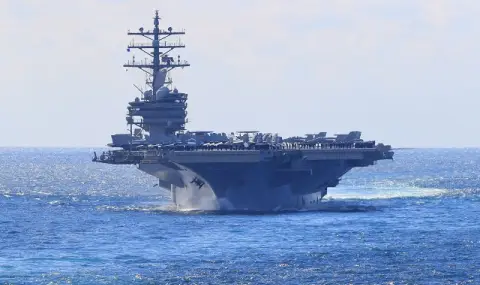America's carrier-centric naval strategy since World War II is outdated in today's multi-threat environment, with China, Russia and others developing effective countermeasures such as hypersonic weapons and anti-ship missiles, a US magazine analysis says The National Interest.
The United States made the aircraft carrier the centerpiece of its naval strategy after World War II. For most of that time, it was a wise move on Washington's part. Few nations - not even the old Soviet Union - could match America's aircraft carrier capabilities.
Today, however, the world is more hostile to the United States than ever before. Unlike the Cold War era, where there was one main challenger to American supremacy and security, today there are at least two major countries challenging America's dominance, and numerous other medium-sized countries, such as Iran or North Korea, seeking to undermine the American position.
What is needed today is a total rethinking of the way America fights - and wins - its wars. Since the end of the Cold War, the United States has not adapted very well to the new geopolitical reality, and the way it acquires weapons and equipment and plans for wars is simply outdated.
All too often, political considerations and the desires of well-funded defense corporations seeking to improve their bottom line (at the expense of the taxpayer) determine the target as opposed to the actual mission and threat understanding determining the weapon or strategy.
The United States has not only committed itself to this weapons platform, but has turned it into a cultural symbol. More than that, the cult of floating fortresses has taken hold to such an extent that even to suggest that America's major state rivals have developed effective countermeasures against them is considered unpatriotic or, worse, heretical.
But this fixation on the aircraft carrier as more than a weapons platform, as a cultural icon, is precisely what makes them such unwieldy weapons. America's enemies, whether China or Russia or even their proxies, have long foreseen how and in what manner the deployment of these weapons would occur. The last thing any army would want to be involved in is a conflict that is predictable. This is especially true when the enemy has spent years developing strategies and amassing arsenals specifically designed to deal with this type of weapon.
Thus, Washington's current military plans fit right in with China's and Russia's access/zone denial strategies. If a real war breaks out between the United States or any of its major rivals, these powers will do whatever it takes to win the war - and that means trying to sink US aircraft carriers before they become a serious threat to their forces and interests .
One way or another, thanks to the advent of hypersonic weapons and anti-ship missiles, such as China's DF-21 series, US aircraft carriers will not be as effective against targets protected by these systems. China, Russia, Iran, and possibly North Korea have also developed similar countermeasures to one degree or another.
The technological development of drones, controlled in part by artificial intelligence, is also happening at lightning speed and is likely to transform warfare strategies forever. There is no better example of this than Ukraine - a country with almost no navy - which used relentless drone and missile attacks to drive much of Russia's Black Sea Fleet out of occupied Crimea.
They accomplished this using small, remote-controlled speedboats, known as Magura V5s, packed with over 200 kilograms of explosives. These highly maneuverable ships soar over the waves at more than 80 kilometers per hour and pursue frigates and landing craft more than 10 times their size.
